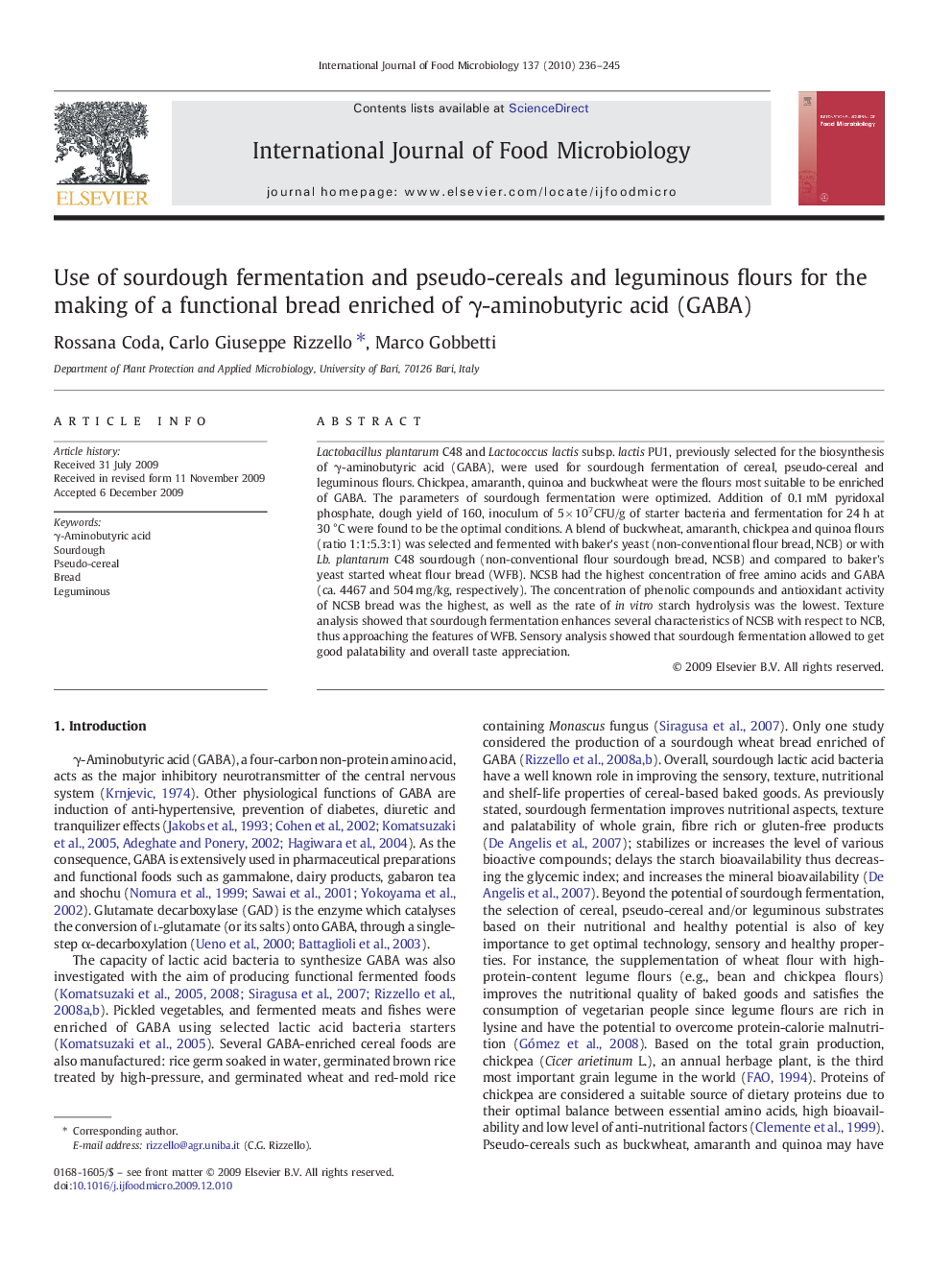| Article ID | Journal | Published Year | Pages | File Type |
|---|---|---|---|---|
| 4369105 | International Journal of Food Microbiology | 2010 | 10 Pages |
Lactobacillus plantarum C48 and Lactococcus lactis subsp. lactis PU1, previously selected for the biosynthesis of γ-aminobutyric acid (GABA), were used for sourdough fermentation of cereal, pseudo-cereal and leguminous flours. Chickpea, amaranth, quinoa and buckwheat were the flours most suitable to be enriched of GABA. The parameters of sourdough fermentation were optimized. Addition of 0.1 mM pyridoxal phosphate, dough yield of 160, inoculum of 5 × 107 CFU/g of starter bacteria and fermentation for 24 h at 30 °C were found to be the optimal conditions. A blend of buckwheat, amaranth, chickpea and quinoa flours (ratio 1:1:5.3:1) was selected and fermented with baker's yeast (non-conventional flour bread, NCB) or with Lb. plantarum C48 sourdough (non-conventional flour sourdough bread, NCSB) and compared to baker's yeast started wheat flour bread (WFB). NCSB had the highest concentration of free amino acids and GABA (ca. 4467 and 504 mg/kg, respectively). The concentration of phenolic compounds and antioxidant activity of NCSB bread was the highest, as well as the rate of in vitro starch hydrolysis was the lowest. Texture analysis showed that sourdough fermentation enhances several characteristics of NCSB with respect to NCB, thus approaching the features of WFB. Sensory analysis showed that sourdough fermentation allowed to get good palatability and overall taste appreciation.
